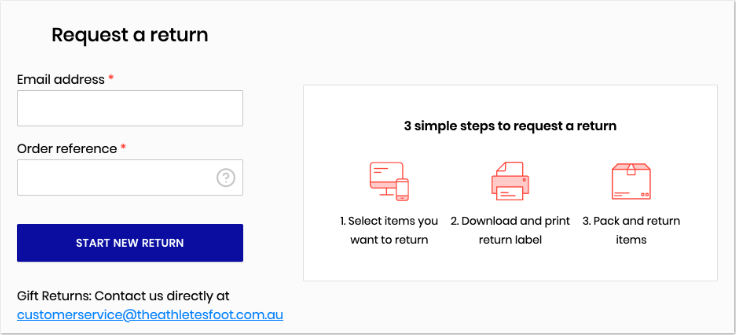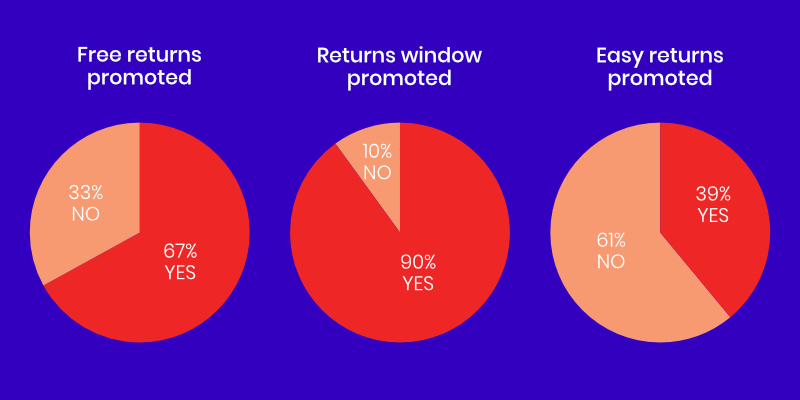Return requests are an inescapable part of running a retail business. While this can be frustrating as an eCommerce retailer, it can also be an opportunity to consider how your returns policy could be working harder for you.
Keep it legal
First thing’s first—make sure your returns policy complies with the law. The Australian Consumer Law requires businesses to provide consumer guarantees for most goods.
There are a couple of exceptions such as goods sold at garage sales or traditional auctions but, for the most part, you are required to offer a refund or exchange if a product is faulty, incorrect or not as described.
Customers are not legally entitled to a refund or exchange if they changed their mind, bought the wrong size or were informed about a fault prior to purchasing. However, there are many reasons to offer a more generous returns policy than you are legally obligated to provide.
Go above and beyond
It can be very tempting to have a returns policy that goes no further than the legal requirements. After all, product returns represent lost revenue and a lot of time and effort in processing and restocking, right? On the other hand, this could actually result in lost sales and reduced customer loyalty.
53% of Australian online shoppers review the returns policy before making a purchase, according to the UPS Pulse of the Online Shopper Asia Pacific Study 2019. A good returns policy reduces cart abandonment and makes your customers feel comfortable and secure in their purchase.
A returns request is also an opportunity to interact with your customers. Offering a stellar customer service experience builds trust in and loyalty to your brand and increases the likelihood of them purchasing from you in the future.
Try to consider the long term effects of a generous returns policy. For the cost of a single returned item, you could create a loyal customer for life.
A great policy in action
The Athlete’s Foot prides itself on customer service and their returns policy is a key part of that. A perfect fit is absolutely vital in the world of athletic shoes. The ability to return purchases gives customers the confidence to buy online. The generous policy is easily accessible from their homepage and helps to set the brand apart.

Make it clear
Too many eCommerce retailers treat returns as an afterthought. They have return policies that are either underdeveloped or full of legal jargon. Both retailers and customers can be left confused and frustrated.
When you write your returns policy, make sure it’s clear and concise. Keep it simple and easy to understand but also consider all of the situations it needs to cover.
Make sure to include:
- How to request a return
Eg. email our customer service team, go to our returns portal etc. - The conditions for a return
Eg. whether an item is worn or unworn, in original packaging etc. - The allowable timeframe for a return
Eg. within 30 days of purchase - Whether you offer free returns or if the customer needs to pay for shipping
- The reason for a return
Eg. damaged, wrong size, change of mind etc. - What the customer needs to include with their return
Eg. order slip, return request number - How to pack the return
Eg. in original packaging - Whether an online purchase can be returned in-store
Make it easy
No one enjoys sending endless emails back and forth to organise a return. As well as a returns policy, make sure you create a simple and logical returns process for customers and your Customer Service team to follow. Ensure that all employees are up to date with your returns policy and procedures so they can assist customers ASAP.
One solution is to implement a self-serve online returns portal like Shippit Returns. This allows customers to initiate a return by simply entering their details, selecting the item to return, reason and condition, and printing their return label. You can set rules so that requests with particular return reasons and conditions are automatically approved—no need to bother your Customer Service team.

Not only will you improve customer experience, you’ll also considerably cut down on the time staff spend processing returns. On top of this, you’ll have visibility of what items are being returned and why—say goodbye to the black hole of returns.
Promote it
If you offer free returns, an extended returns window or an easy returns process, make sure your customers know about it. A good returns policy can be a genuine differentiator and advantage over your competitors. Shout it from the rooftops!
Our State of Omni-channel Retail and Shipping report found that only 39% of Australian eCommerce retailers promote an easy returns process and only 67% promote having free returns. This is the time to own this space.

Post-purchase, include a link to your returns policy in your order confirmation email to remove friction for the customer in case they decide to return the item once it’s arrived.
Key takeaways
Your returns policy does more than just allow shoppers to change their mind. It gives them the confidence and peace of mind to follow through with a purchase and become a loyal customer.
Returns policy best practice means:
- Make sure your returns policy is simple and straightforward
- Automate your returns process to make things easy for staff and customers
- Keep all your employees up to date on policies and procedures to streamline the process
- Use your returns policy as a marketing tool to set you apart from your competitors
Want to see how you stack up compared to other Aussie retailers? Check out our State of Omni-channel Retail and Shipping report.
